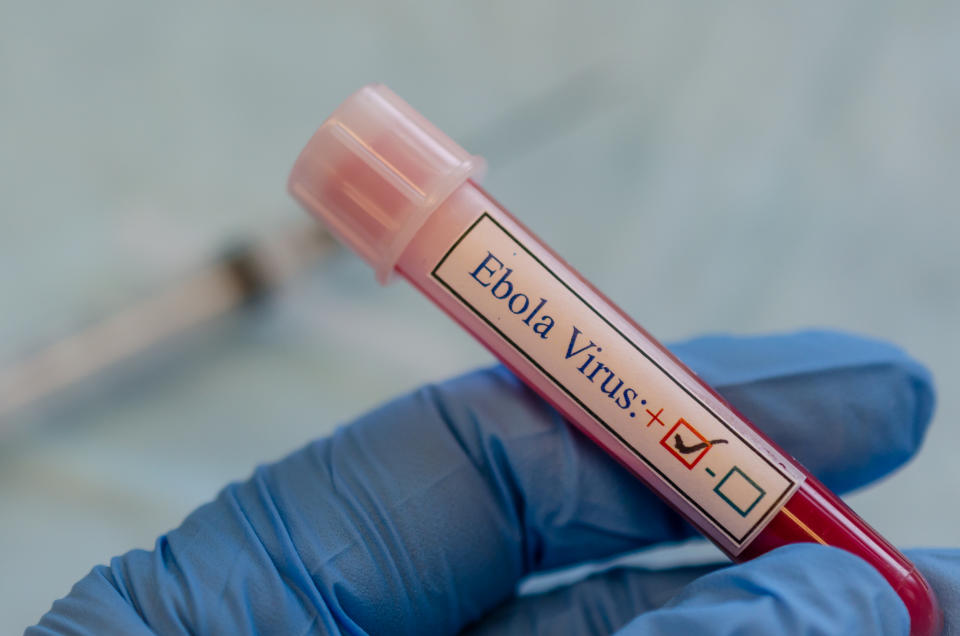The health emergencies you didn't hear about in 2020

Many will undoubtedly look back on 2020 as the year the coronavirus triggered a pandemic only seen around once a century.
Since the infection was identified at the end of 2019, the coronavirus has dominated headlines, forced millions into lockdowns and left many families worldwide mourning the death of a loved one.
The coronavirus is not the only medical emergency doctors have been forced to contend with, however.
The unprecedented pandemic makes up just one of many infectious outbreaks that have arisen worldwide.
Read more: Leukaemia patient infectious with coronavirus for at least 70 days

With 2020 not yet over, the World Health Organization (WHO) has already responded to more than 60 medical emergencies globally.
Read more: Personal trainer hires carer after long COVID leaves him 'wiped out'
“We’ve seen this past year countries with robust health emergency preparedness infrastructure have been able to act quickly to contain and control the spread of the COVID-19 virus,” said a spokesperson.
The WHO’s 73rd world health assembly will consider a draft resolution to help strengthen its member states’ preparedness for a range of health emergencies.
In the meantime, doctors and officials alike have been forced to contend with a range of outbreaks, which may not have made the news.
Yellow fever in central and western Africa
On 15 April, the WHO learnt an 83-year-old man had died with yellow fever in southern Gabon.
With the Central African country reporting no cases since 2019, an investigation revealed its vaccination rates were “suboptimal”.
The deceased man lived in the Mongo area, where 76% of people are said to be immunised against yellow fever – below the “optimal” rate of 85% or above.
The WHO worries yellow fever can “spill over” from more built up areas to rural regions, where vaccination rates are typically lower.
Spread by mosquitoes, a “small proportion” of people who catch the virus develop severe symptoms – namely internal bleeding, of whom around half die within seven to 10 days.
Read more: Coronavirus makes tinnitus worse for 40% with the hearing disorder
A 55-year-old woman also tested positive for the virus in the northern part of Togo, but was not reported to have died.
The West African country’s last yellow fever outbreak was in late 2006 and early 2007, when three cases came to light across two districts.
The WHO has warned there is “a risk of disruption to routine immunisation activities due to COVID-19 [the disease caused by the coronavirus] related impacts on the health system and a decreased demand for immunisation due to physical distancing requirements or community reluctance.
“Disruption of immunisation services, even for brief periods, will increase the numbers of susceptible people and the likelihood of outbreaks of vaccine preventable diseases.”

Measles in Mexico
Also in April, the WHO warned Mexico was experiencing a measles outbreak.
Between 1 January and 2 April, 124 laboratory confirmed cases were reported, with hundreds more remaining under investigation.
The WHO Region of the Americas was declared measles-free in September 2016. Three years later, 14 countries confirmed outbreaks.
Measles is a highly infectious virus that commonly causes cold-like symptoms, a fever and a blotchy rash.
Most cases pass within 10 days, however, the infection can trigger life-threatening pneumonia and inflammation of the brain.
Read more: Asian ethnicity 'strongly linked' to coronavirus-related stroke
While an outbreak has not been declared in the UK, it lost its measles-free status after 989 confirmed cases came to light in England and Wales in 2018.
The infection is preventable via vaccinations, which are routinely offered to children in the UK. The rate of uptake has consistently been below the WHO’s 95% goal, however.
Watch: Can you catch coronavirus twice?
Ebola outbreak over in eastern DRC
In more positive news, the Ebola outbreak in eastern Democratic Republic of the Congo (DRC) – the world’s second largest on record – was declared over on 25 June.
The nearly two-year outbreak was said to be particularly challenging due to it taking place in an active conflict zone.
“The response involved training thousands of health workers, registering 250,000 contacts, testing 220,000 samples, providing patients with equitable access to advanced therapeutics, vaccinating over 303,000 people with the highly effective rVSV-ZEBOV-GP vaccine, and offering care for all survivors after their recovery,” according to the WHO.
“The response was bolstered by the engagement and leadership of the affected communities.
“Thanks to their efforts, this outbreak did not spread globally.”
As of 3 July, the outbreak had led to 3,481 confirmed cases, 2,299 deaths and 1,162 recoveries.
Ebola continues to be an issue in western DRC, however, with an eleventh outbreak being confirmed on 1 June.
Genetic sequencing has revealed the circulating strain is different from the one that affected the region in 2018. Although unclear, an animal source is likely to blame, according to the WHO.
The organisation is “counting down to the end” of the western DRC’s outbreak.

Chikungunya in Chad
Tests revealed there was an outbreak of the chikungunya virus, with 27,540 cases occurring across three provinces between July and September.
Spread by mosquitoes, chikungunya infections are rarely life-threatening, however, symptoms can be disabling, with many enduring agonising joint pain for months.
With no set treatment or vaccine, the WHO is focusing on disinfecting and destroying mosquito breeding sites.
Africa free of ‘wild’ polio
In a “historic milestone”, the WHO African Region was declared free of wild polio on 25 August following four years without a case.
There are three types of wild, or naturally-occurring, poliovirus – type 1, 2 and 3.
Type 2 wild poliovirus was declared eradicated in September 2015, with the last detected case in 1999. Type 3 was declared eradicated in October 2019, with the last known incidence in November 2012.
Only type 1 wild poliovirus remains. Vaccine-derived poliovirus, however, is present in 16 African countries.
Vaccine-derived poliovirus is a strain of the weakened virus that was initially included in the oral vaccine and has changed over time to behave more like the wild infection.
“For this reason, the global eradication of polio requires stopping all OPV [oral polio vaccine] in routine immunisation, as soon as possible after the eradication of wild poliovirus transmission,” according to the WHO.
The organisation has called Africa’s wild polio elimination a “historic milestone”.
Five of the six WHO regions – representing more than 90% of the global population – are now free of the virus, moving the world closer to total eradication.
Just Pakistan and Afghanistan continue to see wild polio transmission.
Praising widespread vaccination, the WHO’s director-general Dr Tedros Adhanom Ghebreyesus said: “Ending wild polio virus in Africa is one of the greatest public health achievements of our time and provides powerful inspiration for all of us to finish the job of eradicating polio globally.”
Warning against immunisation complacency, Holger Knaack – president of the non-profit organisation Rotary International – added: “During a challenging year for global health, the certification of the African region as wild poliovirus-free is a sign of hope and progress that shows what can be accomplished through collaboration and perseverance.
“Polio eradication is possible, as long as the world remains committed to finishing the job.”
Watch: What is long COVID?



